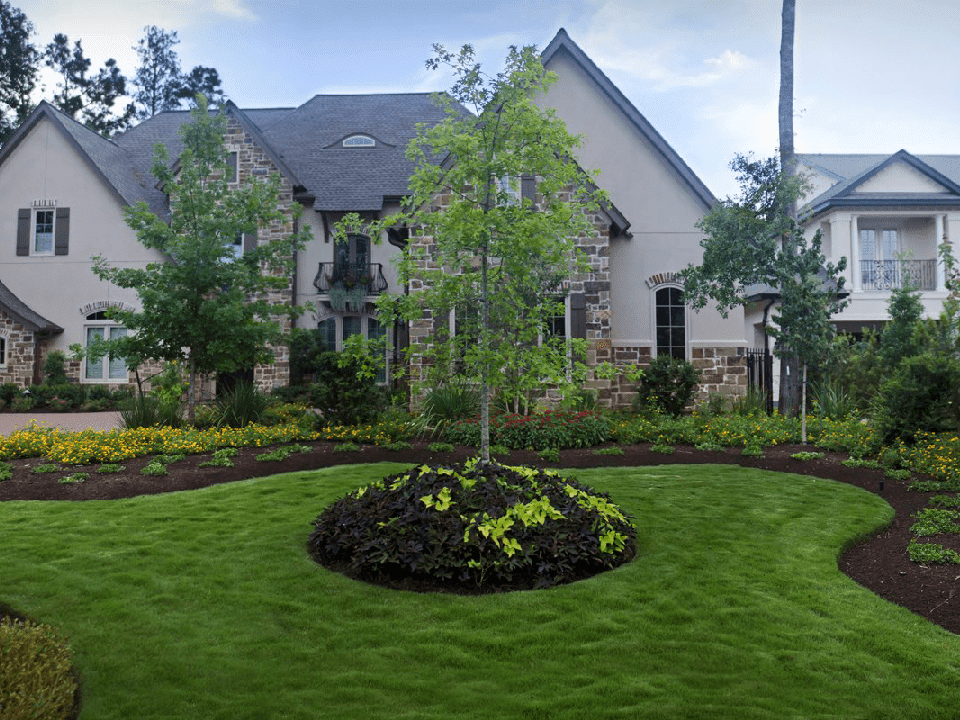The Main Principles Of Hilton Head Landscapes
Table of ContentsThe Single Strategy To Use For Hilton Head LandscapesThe Ultimate Guide To Hilton Head Landscapes3 Simple Techniques For Hilton Head LandscapesThe 15-Second Trick For Hilton Head LandscapesA Biased View of Hilton Head LandscapesAn Unbiased View of Hilton Head LandscapesThe Ultimate Guide To Hilton Head Landscapes
Line creates all forms and patterns and can be utilized in a variety of methods the landscape. Line in the landscape is produced by the side between 2 materials, the overview or shape of a form, or a lengthy linear function. Lines are a powerful device for the designer due to the fact that they can be utilized to develop an unlimited selection of shapes and types, and they regulate activity of the eye and the body.

Lines in the landscape. The residential properties of lines figure out exactly how people respond to the landscape, both emotionally and physically.
Fascination About Hilton Head Landscapes
Straight lines are frequently found in hardscape sides and material. Curved lines develop a casual, all-natural, loosened up character that is connected much more with nature and unbalanced balance. Curved lines move the eye at a slower rate and include secret to the space by creating covert sights. Upright lines relocate the eye up, making a room really feel bigger.
Upright lines in the landscape include tall, slim plant product, such as trees, or high frameworks, such as an arbor or a bird house on a pole. Horizontal lines relocate the eye along the ground aircraft and can make a room really feel bigger. Low lines are much more suppressed and develop a sensation of remainder or repose.
The 5-Minute Rule for Hilton Head Landscapes
Reduced lines are produced by low yard wall surfaces, pathways, and short bushes. Lines are made use of to draw forms on a plan. In strategy view, they define plant beds and hardscape locations. Lines are likewise created by the vertical types of built attributes and plant product. There are three primary line kinds that produce form in the landscape: bedlines, hardscape lines, and plant lines.
Bedlines link plant material to your home and hardscape due to the fact that the eye adheres to the line, relocating the gaze via the landscape. Hardscape lines are produced by the side of the hardscape, which defines the built framework. Line can also be developed by long and narrow materials, such as a fencing or wall.
Fascination About Hilton Head Landscapes
Form is discovered in both hardscape and plants, and it is typically the dominant aesthetic element that spatially organizes the landscape and typically identifies the style of the garden. The type of structures, plant beds, and yard accessories additionally determines the general type style of the yard. Official, geometric kinds consist of circles, squares, and polygons.
Plants develop kind in the yard via their details or silhouettes, however form can also be defined by a void or unfavorable area in between plants - Landscapers near me (https://qualtricsxm5z596vv95.qualtrics.com/jfe/form/SV_eEczR6xKXKuv6mi). Circles can be cycles, or they can be separated into fifty percent circles or circle segments and combined with lines to develop arcs and tangents
The Of Hilton Head Landscapes
Circles are a solid design form because the eye is constantly attracted to the center, which can be used to highlight a focal factor or attach other kinds. Circular kinds in hardscape and yard panels.
The square form can likewise be fractional and used repeatedly to create a grid pattern. Unlike circles, squares are stronger on the sides, which can be aligned or overlapped to develop one-of-a-kind patterns and even more complicated types. Polygons are many-sided forms with straight edges. Triangulars, as an example, are three-sided polygons.
Meandering lines typically simulate the natural course of rivers or streams and can be referred to as smooth lines with deeply rounded undulations. Twisting lines (Number 3) work well for paths, plant bedlines, and dry stream beds. Meandering lines can include rate of interest and enigma to a garden by leading audiences around edges to find new sights and spaces.
Getting My Hilton Head Landscapes To Work

Figure 5. Fragmented sides: stepping stones in path. Kind is one of the most long-lasting top quality of a plant (bluffton landscaping). https://www.huntingnet.com/forum/members/h1tnhdlndscps.html. Common plant kinds are well established and standard, as kind is the most constant and recognizable attribute of plants. Form can likewise be developed through the massing of plants, where the general mass develops a different type than a specific plant.
An extremely different form has to be utilized with careone or 2 work well as a centerpiece, however also many wreak havoc. All-natural plant forms, rather than over-trimmed forms, ought to establish the bulk of the composition. The significance of general type is essentially based on the watching perspectivethe kind of a tree can show up fairly various to an individual standing under the cover versus viewing the tree from a distance in an open field.
Hilton Head Landscapes - An Overview
Plant forms also produce and define the void or open rooms in between the plants, producing either convex or concave kinds in the spaces. High-arching tree branches normally produce a concave open room under the branches, top article and a rounded canopy with low branches fills the room to develop a convex type outdoors room under the tree.